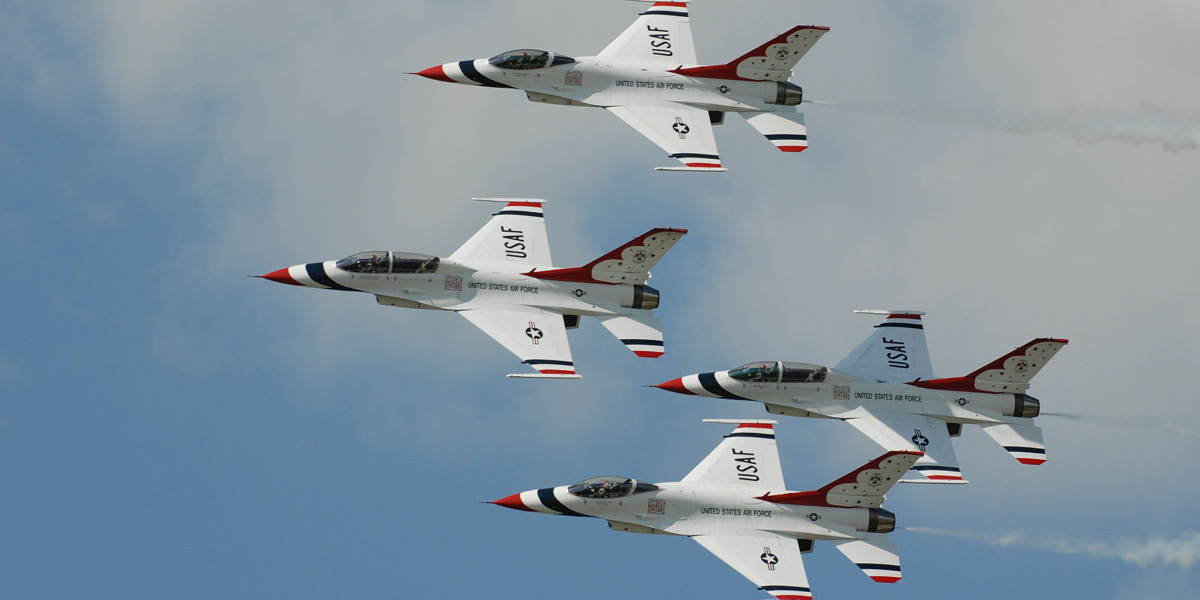

Experts say that an adverse culture and lack of high-level support can hinder change in complex organizations.
So what can we do to drive change when the culture and leadership norms are working against us?
Here’s what fighter pilot John Boyd did when he challenged the norms of the U.S. military.
In the biography “Boyd: The Fighter Pilot Who Changed the Art of War” author Robert Coram offers a detailed picture of one man and a handful of his colleagues who were able to make a huge impact on military operations.
Among other impressive accomplishments, Boyd became an elite fighter pilot and was invited to be an instructor at the Fighter Weapons School. He developed the E-M Theory, questioned the standard thinking of optimal aircraft design, and played a leadership role in an aircraft design project. Later he published more thought leadership articles and briefings, led a military reform movement, and influenced how major sections of the military approach warfare.
Without ever rising to the rank of general.
I found the story to be unexpectedly relatable. In some ways painfully accurate in describing the disappointments and self-doubt that can come with going against the grain.
Yet in other ways encouraging. As it outlines the actions that Boyd took and advice he gave others during his career we get an idea of what allowed him to accomplish what he did. And stay motivated along the way.
Here are eight lessons that emerged from the story:
Become embedded in your craft and test its boundaries
Boyd loved being a fighter pilot. He was almost obsessed with finding new ways to beat the competition. He was constantly thinking about improving tactics.
Being immersed in the craft gave him a first-hand view of what fighter pilots want and need. Hopping into the cockpit each day was an opportunity to apply what was already known, and test the boundaries of what the aircraft could do.
As he moved onto aircraft procurement and higher-level military tactics, he applied the same approach. He studied what was done before while questioning assumptions and forming new theories.
“You gotta challenge all assumptions. If you don’t, what is doctrine on day one becomes dogma forever after.”
– John Boyd
Look for ways to codify the intangible
The author explains that in the 1950s, most pilots saw air combat as an art form. But Boyd sought to go deeper, and find out how to codify the practices and physics of aerial combat, which he published in a document called the “Aerial Attack Study.” Suddenly, what formerly seemed mysterious could be explained and replicated. Those insights could be tested, refined, and applied in multiple ways.
Don’t be intimidated by knowledge gaps
Boyd studied economics in undergrad, then trained to become a fighter pilot. When he realized that understanding more about engineering would help him codify flying, he taught himself calculus and enrolled in an industrial engineering program. When he was stationed in Vietnam, he became interested in the nature of creativity and created his own learning plan, reading countless books and articles.
He recognized the skills he would need to answer his questions. Then he either found someone who could teach him until he knew the concepts inside and out, or sought out other sources of education.
Assemble a network of like-minded changemakers
Boyd’s personality and mission made him plenty of enemies during his career but he also fostered a network of supporters. Boyd specifically connected with people who were analytical like him, idealistic, and not afraid to speak the truth or change the system from within.
He developed a network of supporters across the military at different levels, rather than a single “innovation program” within the Pentagon. His supporters, all impressive in their own right, believed in his vision and goals and lent their talents, expertise, or influence to the cause. He also won over some of the generals and the Air Force chief of staff, which helped to provide cover when other generals thought he was being too disruptive.
Decide whether you want to “be someone” or “do something”
One of the most powerful glimpses into Boyd’s mind is when the author is describing a speech Boyd would give to his tribe of changemakers. A mix of civilians and military, they were all ambitious men working in a hierarchical system.
According to Boyd, each had two paths to choose from. One was to “be someone.” To be promoted, recognized, and rewarded. Getting there usually required following the existing rules and not questioning the status quo.
The other option was to “do something.” That meant making decisions and sharing insights that were unpopular. Multiple times Boyd and his followers were almost fired or “forced to resign.” “Doing something” is not guaranteed to win you the external accolades of the current system. So if you want to “do something” your drive has to be based on the desire to build something better, regardless of the external rewards you receive.
“Do you want to be part of the system or do you want to shake up the system?”
– John Boyd
Prepare your pitch for the critics
Boyd was going up against the military technology complex, which required making cases that were extremely unpopular with leadership in his organization. He was illuminating how Air Force-backed airplanes performed worse than their counterparts, cost too much, or risked the safety of servicemembers.
However, a lot of prestige and money was attached to those technology projects, so a set of stakeholders was strongly against having the truth come to light.
Boyd dealt with this by focusing on making his conclusions rock solid, with supporting data. He knew that any fault in the data or logic would cause all credibility to unravel. And that his opponents would be actively looking for it. He also advised his team to share the most conservative estimates, so that any adjustments would just increase the totals and make the case more compelling.
Share your work
Boyd was known as someone who loved to talk loudly and share his thoughts about fighter tactics. So much that his knowledge was recognized and he was invited to teach tactics.
He also spent time preparing his knowledge and findings into briefings and manuals, often during his off-hours, in order to package and share his thoughts in ways that others could learn from, whether they attended a briefing or poured over the details of his writings.
Frame your mission around a shared goal
Some of the tougher fights came when Boyd and his team were questioning purchasing or design decisions related to expensive aircraft. There was a coalition of people with strong interest in continuing down that path and investing further.
Boyd cautioned his team against waging a war against the plane itself, and to instead focus on a broader mission of keeping pilots safe. Reframing their argument helped to cast the challengers as advocates for soldiers, instead of critics of decisions made by leaders. It changed the narrative to two groups ideally working with the common interest of the soldier at heart, as opposed to a battle between two aircraft designs.
While some of Boyd’s tactics were unconventional, his contribution is undeniable. How will you apply these lessons in your own work? If you’ve been following along with the 2017 Reading List, what other insights did you pull from the book?